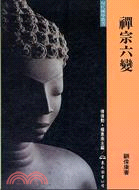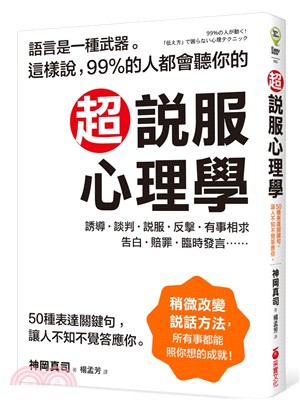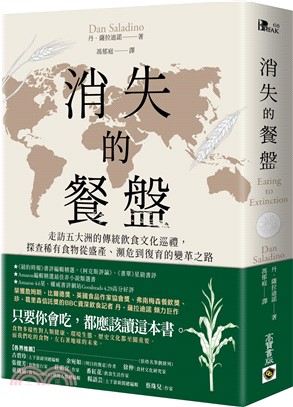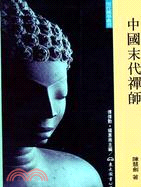STRUCTURAL IDENTIFICATION OF ORGANIC COMPOUNDS WITH SPECTROSCOPIC TECHNIQUES
- ISBN13:9783527312405
- 出版社:JOHN WILEY & SONS;LTD
- 作者:NING
- 裝訂/頁數:精裝/468頁
- 出版日:2005/03/08
定 價:NT$ 4725 元
優惠價:90 折 4253 元
絕版無法訂購
相關商品
商品簡介
作者簡介
目次
商品簡介
Clearly structured, easy to read and optimal to understand, this extensive compendium fills the gap between textbooks devoted to either spectra interpretation or basic physical principles. The original Chinese editions have already sold over 18,500 copies, and the material is taken from the latest literature from around the world, plus technical information provided by the manufacturers of spectroscopic instruments. Alongside basic methods, Professor Ning presents up-to-date developments in NMR, MS, IR and Raman spectroscopy, such as pulsed-field gradient technique, LC-NMR, and DOSY. He stresses the application of spectroscopic methods, interpreting them in great detail and depth since most of the selected spectra may be applied to practical work, as well as summarizing the rules for their interpretation. He also incorporates his original ideas, including a comparison of the common points in different spectroscopic techniques. This monograph features a unique structure, a typical example being the discussion of 2D NMR starting from pulse sequence units, which construct various pulse sequences for related 2D NMR. A complete chapter deals with the determination of configurations and conformations of organic compounds and even biological molecules from the viewpoint of spectroscopic methodologies, while one whole section is dedicated to the interpretation of mass spectra produced by soft ionization techniques. The principles of mass analyzers, especially the ion trap, are discussed in great depth, together with a concise summary of the MS fragmentation and rearrangement of common compounds, allowing readers to easily predict related mass spectrometric reactions. All the three kinds of library retrieval of mass spectra are presented in detail, together with recent developments in molecular vibration spectroscopy. The whole is rounded off with several appendices, including a subject index for rapid reference. With a foreword by the Nobel prizewinner, Richard R. Ernst.
作者簡介
Yong-Chen Ning studied at the Engineering-Physics Department of the Tsinghua University, Beijing, China where after his graduation he worked as a faculty member. From 1971 to 1978 he researched on structural identification of organic compounds at the Institute of Chemical Engineering in Shenyang. Between 1981 an 1984 Yong-Chen Ning participated in researches in the NMR, MS, X-ray diffraction an alkaloid laboratories of the Institute of Chemistry of Natural Substances in Paris. Since 1993 he is a full professor at the Tsinghua University. Yong-Chen Ning's books won several awards, e.g. the price for excellent teaching materials, and belong to the standard repertoire of chinese students.
目次
Foreword.
Preface.
1 Introduction to Nuclear Magnetic Resonance.
1.1 Basic Principle of NMR.
1.2 Chemical Shift.
1.3 Spin–spin Coupling.
1.4 Magnetization.
1.5 Relaxation Process.
1.6 Pulse-Fourier Transform NMR Spectrometer.
1.7 Recent Developments in NMR Spectroscopy.
1.8 References.
2 1H NMR Spectroscopy.
2.1 Chemical Shift.
2.2 Coupling Constant J.
2.3 Spin–spin Coupling System and Classification of NMR Spectra.
2.4 Common Second-order Spectra.
2.5 Spectra of Common Functional Groups.
2.6 Methods for Assisting the Spectrum Analysis.
2.7 Double Resonance.
2.8 Dynamic Nuclear Magnetic Resonance.
2.9 Interpreting 1H NMR Spectra.
2.10 References.
3 13C NMR Spectroscopy.
3.1 Introduction.
3.2 Chemical Shift.
3.3 Coupling and Decoupling Methods in 13C Spectra.
3.4 Relaxation.
3.5 Interpretation of 13C NMR Spectra.
3.6 References.
4 Application of Pulse Sequences and Two-dimensional NMR Spectroscopy.
4.1 Fundamentals.
4.2 Spectrum Editing.
4.3 Introduction to 2D NMR.
4.4 J Resolved Spectra.
4.5 Heteronuclear Shift Correlation Spectroscopy.
4.6 Homonuclear Shift Correlation Spectroscopy.
4.7 NOESY and its Variations.
4.8 Relayed Correlation Spectra and Total Correlation Spectra.
4.9 Multiple Quantum 2D NMR Spectra.
4.10 1H Detected Heteronuclear Correlation Spectra.
4.11 Combined 2D NMR Spectra.
4.12 Three-dimensional NMR Spectra.
4.13 DOSY.
4.14 References.
5 Organic Mass Spectrometry.
5.1 Fundamentals of Organic Mass Spectrometry.
5.2 Mass Analyzers.
5.3 Ionization.
5.4 Metastable Ions and their Measurement.
5.5 Tandem Mass Spectrometry (MSn).
5.6 Combination of Chromatography and Mass Spectrometry.
5.7 References.
6 Interpretation of Mass Spectra.
6.1 Determination of Molecular Weight and Elemental Composition.
6.2 Reactions and their Mechanisms in Organic Mass Spectrometry.
6.3 Mass Spectrum Patterns of Common Functional Groups.
6.4 Interpretation of Mass Spectra.
6.5 Library Retrieval of Mass Spectra.
6.6 Interpretation of the Mass Spectra from Soft Ionization.
6.7 References.
7 Infrared Spectroscopy and Raman Spectroscopy.
7.1 General Information on Infrared Spectroscopy.
7.2 Basic Theory of IR Spectroscopy.
7.3 Characteristic Frequencies of Functional Groups.
7.4 Interpretation of IR Spectra.
7.5 Recent Developments in Infrared Spectroscopy.
7.6 Principle and Application of Raman Spectroscopy.
7.7 References.
8 Identification of an Unknown Compound through a Combination of Spectra.
8.1 Structural Identification of an Unknown Compound by Combination of One-dimensional NMR and Other Spectra.
8.2 Determination of the Functional Groups (or Structural Units) of an Unknown Compound.
8.3 Deduction of the Structure of an Organic Compound on the Basis of 2D NMR Spectra.
8.4 Examples of Structural Identification or Assignment.
8.5 References.
9 Determination of Configuration and Conformation of Organic Compounds by Spectroscopic Methods.
9.1 NMR.
9.2 Mass Spectrometry.
9.3 Infrared and Raman Spectroscopy.
9.4 References.
Appendix 1: Product Operator Formalism for Pulse Sequences.
Appendix 2: Characteristic Frequencies of Common Functional Groups.
Index.
Preface.
1 Introduction to Nuclear Magnetic Resonance.
1.1 Basic Principle of NMR.
1.2 Chemical Shift.
1.3 Spin–spin Coupling.
1.4 Magnetization.
1.5 Relaxation Process.
1.6 Pulse-Fourier Transform NMR Spectrometer.
1.7 Recent Developments in NMR Spectroscopy.
1.8 References.
2 1H NMR Spectroscopy.
2.1 Chemical Shift.
2.2 Coupling Constant J.
2.3 Spin–spin Coupling System and Classification of NMR Spectra.
2.4 Common Second-order Spectra.
2.5 Spectra of Common Functional Groups.
2.6 Methods for Assisting the Spectrum Analysis.
2.7 Double Resonance.
2.8 Dynamic Nuclear Magnetic Resonance.
2.9 Interpreting 1H NMR Spectra.
2.10 References.
3 13C NMR Spectroscopy.
3.1 Introduction.
3.2 Chemical Shift.
3.3 Coupling and Decoupling Methods in 13C Spectra.
3.4 Relaxation.
3.5 Interpretation of 13C NMR Spectra.
3.6 References.
4 Application of Pulse Sequences and Two-dimensional NMR Spectroscopy.
4.1 Fundamentals.
4.2 Spectrum Editing.
4.3 Introduction to 2D NMR.
4.4 J Resolved Spectra.
4.5 Heteronuclear Shift Correlation Spectroscopy.
4.6 Homonuclear Shift Correlation Spectroscopy.
4.7 NOESY and its Variations.
4.8 Relayed Correlation Spectra and Total Correlation Spectra.
4.9 Multiple Quantum 2D NMR Spectra.
4.10 1H Detected Heteronuclear Correlation Spectra.
4.11 Combined 2D NMR Spectra.
4.12 Three-dimensional NMR Spectra.
4.13 DOSY.
4.14 References.
5 Organic Mass Spectrometry.
5.1 Fundamentals of Organic Mass Spectrometry.
5.2 Mass Analyzers.
5.3 Ionization.
5.4 Metastable Ions and their Measurement.
5.5 Tandem Mass Spectrometry (MSn).
5.6 Combination of Chromatography and Mass Spectrometry.
5.7 References.
6 Interpretation of Mass Spectra.
6.1 Determination of Molecular Weight and Elemental Composition.
6.2 Reactions and their Mechanisms in Organic Mass Spectrometry.
6.3 Mass Spectrum Patterns of Common Functional Groups.
6.4 Interpretation of Mass Spectra.
6.5 Library Retrieval of Mass Spectra.
6.6 Interpretation of the Mass Spectra from Soft Ionization.
6.7 References.
7 Infrared Spectroscopy and Raman Spectroscopy.
7.1 General Information on Infrared Spectroscopy.
7.2 Basic Theory of IR Spectroscopy.
7.3 Characteristic Frequencies of Functional Groups.
7.4 Interpretation of IR Spectra.
7.5 Recent Developments in Infrared Spectroscopy.
7.6 Principle and Application of Raman Spectroscopy.
7.7 References.
8 Identification of an Unknown Compound through a Combination of Spectra.
8.1 Structural Identification of an Unknown Compound by Combination of One-dimensional NMR and Other Spectra.
8.2 Determination of the Functional Groups (or Structural Units) of an Unknown Compound.
8.3 Deduction of the Structure of an Organic Compound on the Basis of 2D NMR Spectra.
8.4 Examples of Structural Identification or Assignment.
8.5 References.
9 Determination of Configuration and Conformation of Organic Compounds by Spectroscopic Methods.
9.1 NMR.
9.2 Mass Spectrometry.
9.3 Infrared and Raman Spectroscopy.
9.4 References.
Appendix 1: Product Operator Formalism for Pulse Sequences.
Appendix 2: Characteristic Frequencies of Common Functional Groups.
Index.
主題書展
更多主題書展
更多書展本週66折
您曾經瀏覽過的商品
購物須知
外文書商品之書封,為出版社提供之樣本。實際出貨商品,以出版社所提供之現有版本為主。部份書籍,因出版社供應狀況特殊,匯率將依實際狀況做調整。
無庫存之商品,在您完成訂單程序之後,將以空運的方式為你下單調貨。為了縮短等待的時間,建議您將外文書與其他商品分開下單,以獲得最快的取貨速度,平均調貨時間為1~2個月。
為了保護您的權益,「三民網路書店」提供會員七日商品鑑賞期(收到商品為起始日)。
若要辦理退貨,請在商品鑑賞期內寄回,且商品必須是全新狀態與完整包裝(商品、附件、發票、隨貨贈品等)否則恕不接受退貨。

























